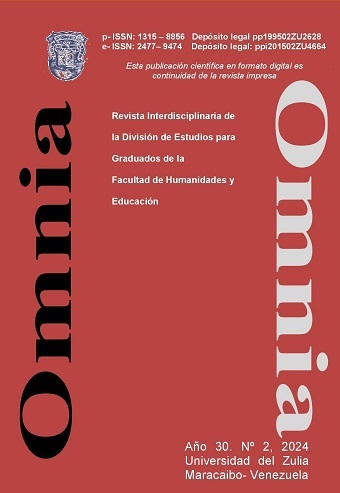Diseño de un sistema de codificación para muestras de la colección de referencia del centro de investigaciones biológicas
Resumen
Se propone un sistema de codificación estandarizado para la Colección de referencia del Centro de Investigaciones Biológicas de la Facultad de Humanidades y Educación, La Universidad del Zulia. La falta de un sistema de este tipo pudiera dificultar la identificación de los ejemplares en la investigación científica, así como su conservación y mantenimiento en condiciones óptimas. Para su creación, se utilizó una combinación de métodos originales y modificaciones importantes a técnicas y equipos conocidos. Se generaron los primeros códigos propuestos, los cuales constan de las iniciales de la Colección de Referencia, la institución que los almacena, la inicial del área científica de especialidad de la muestra y por último una secuencia numérica con cinco (5) dígitos para la designación de la misma. Esta propuesta permitirá la identificación precisa y uniforme de dichos ejemplares, lo que facilitará su gestión y conservación a largo plazo. El uso del código "Data Matrix" resultará una opción adecuada para el sistema de codificación de dicha Colección, ya que permitirá una tipificación y organización específica de las muestras biológicas, incluso permite respaldar los datos hasta en el caso de que se suceda algún daño o avería en dichos códigos
Descargas
Citas
Colwell, R. K. y R. L. C Pilgrim. (2000). The importance of specimen data bases and voucher specimens in conservation biology. In Annals of the Missouri Botanical Garden (Vol. 87, pp. 30-42). Missouri Botanical Garden Press.
Hebert, Paul; Cywinska, Alina; Bally, Shelley y Waard, Jeremy (2003). Bar code of Life: A vision for using DNA barcodes to identify species. In Molecular ecology notes (Vol. 3, pp. 477-491). Black-well Science Ltd.
Hovestadt, T. y Schmidt, G. (2018). The importance of specimen collec-tion management in biodiversity research. PLoSbiology, 16(8), e2004606.
Inskscape 1.0.2 [Software]. (2023). Inskscape Draw freely. Disponible en: https://inkscape.org/. Recuperado el 2 de junio 2023.
Patterson, D. J. y Cooper, J. (2017). Collection management of natural history collections in the digital age: An introduction. Collection management, 42(1), 1-6.
Royce, Winston (1987). Managing the development flarge software sys-tems: Concepts and techniques. Proceedings of the 9th internation-al conference on Software Engineering. IEEE Computer Society Press, 328-338.
Society for the Preservation of Natural History Collections. (2010). Best practices for collection management and specimen preservation. SPNHC. https://www.spnhc.org/best-practices-for-collection-management-and-specimen-preservation/
Thiers, B. (2016). Index herbariorum: A global directory of public her-baria and associated staff. New York Botanical Garden's Virtual Herbarium.esionales Acatlán.





